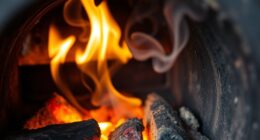With my extensive experience in using wood stoves, I’ve discovered that the crucial factor in maintaining a warm and efficient fire is mastering the control of the damper.
In this article, I’ll share my expertise on how to use a wood stove damper to control airflow and heat, increase efficiency, and reduce smoke.
With a few simple adjustments, you’ll be able to transform your wood stove into a powerhouse of warmth and coziness.
Let’s dive in and unlock the secrets of the wood stove damper!
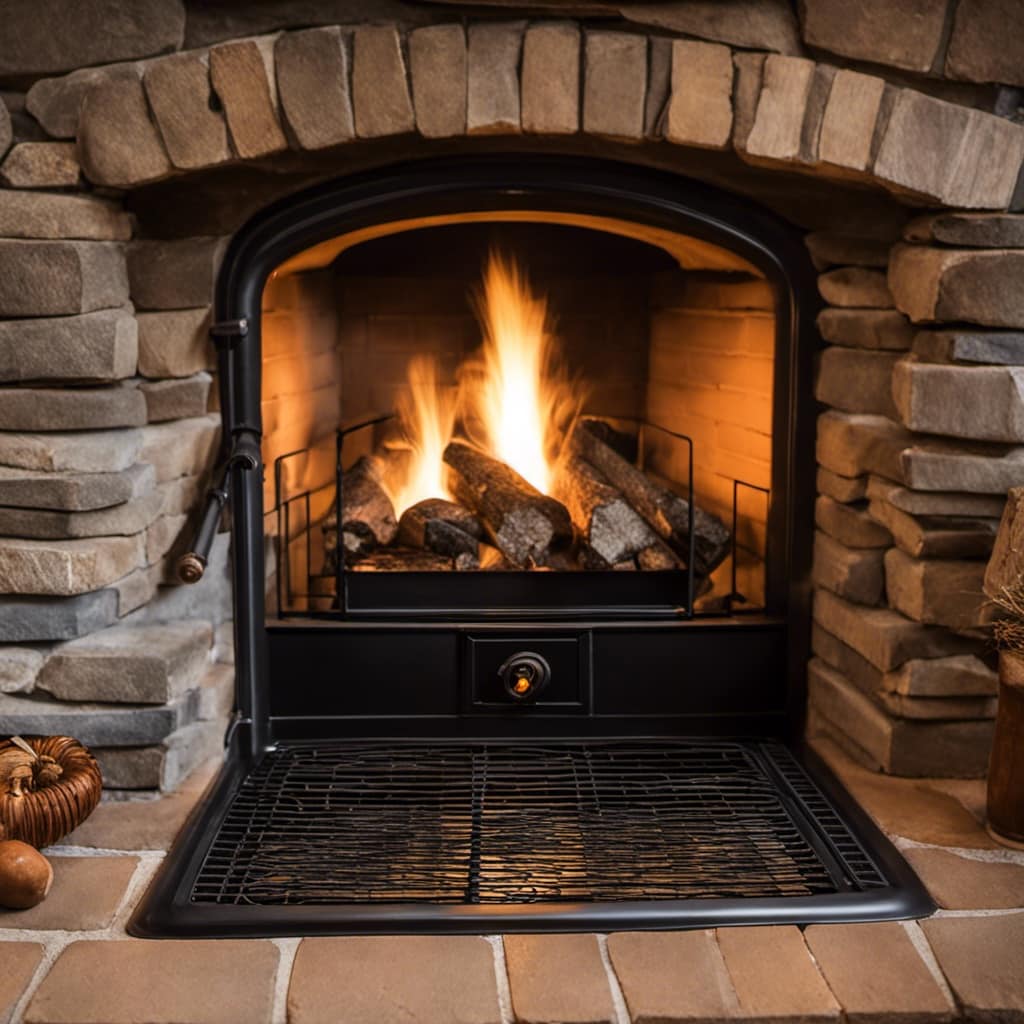
Key Takeaways
- Wood stove dampers help regulate airflow and control the intensity and duration of the fire.
- Regular maintenance is necessary to ensure smooth functioning and prevent air leaks.
- Proper usage and maintenance of wood stove dampers are crucial for efficient wood stove operation.
- Adjusting the damper can regulate heat output and control the amount of air entering the stove.
Understanding the Purpose of a Wood Stove Damper
I find it important to understand the purpose of a wood stove damper before using it. A wood stove damper is a device that helps regulate the airflow in the stove, allowing you to control the intensity and duration of the fire. It’s an essential component of the stove that plays a crucial role in efficient and safe operation.
Proper wood stove damper maintenance is essential to ensure its smooth functioning. Regular cleaning and inspection are necessary to remove any build-up of creosote or debris that can hinder the damper’s operation. Additionally, lubricating the hinges and ensuring a tight seal will prevent any air leaks, maximizing the damper’s effectiveness.
If you encounter any issues with your wood stove damper, troubleshooting is necessary. Common problems include a damper that won’t open or close, a damper that’s stuck in one position, or a damper that doesn’t provide enough airflow. Checking for obstructions, adjusting the damper’s position, or replacing malfunctioning parts can often resolve these issues.
Understanding the purpose of a wood stove damper is crucial as it sets the foundation for using it effectively. Now that we’ve explored the importance of a wood stove damper and how to maintain and troubleshoot it, let’s delve into the different types of wood stove dampers and how they work.
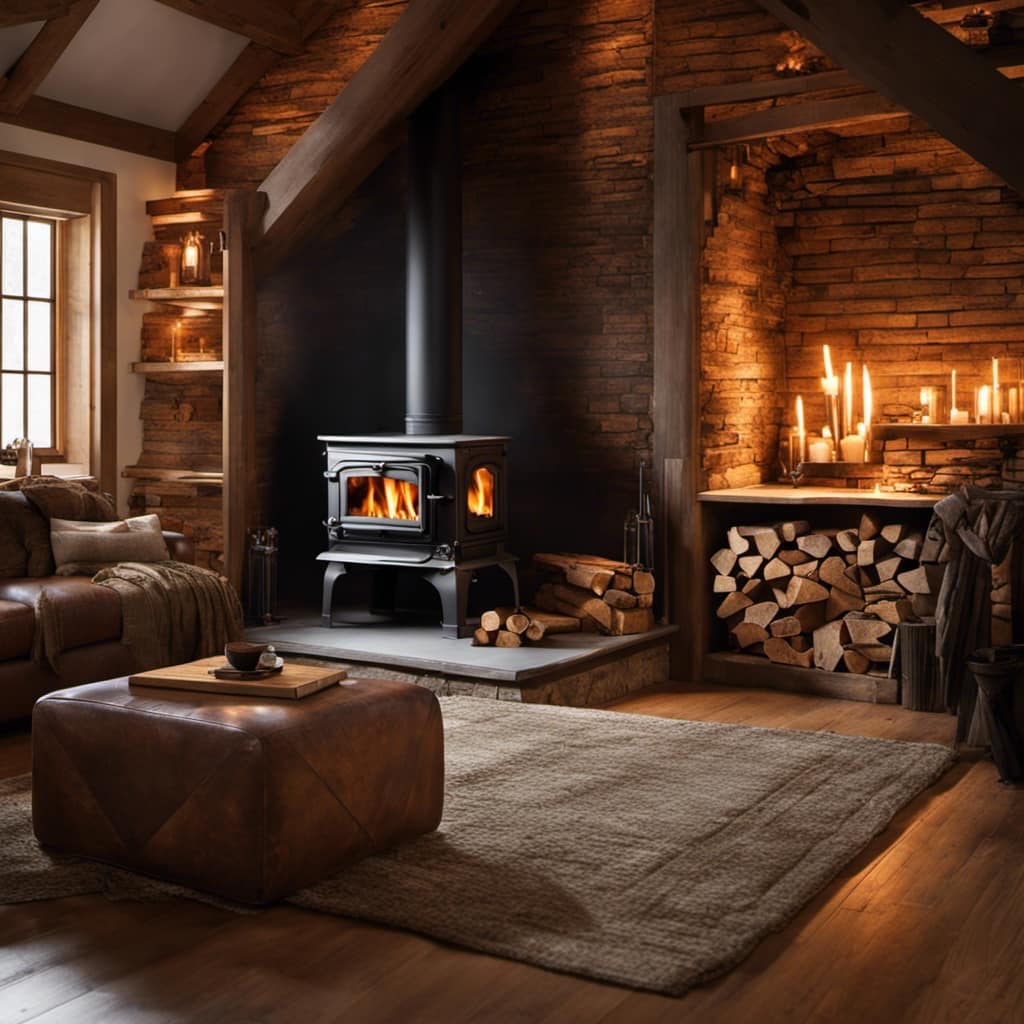
Different Types of Wood Stove Dampers and How They Work
As an expert in wood stove dampers, I’m well-versed in the different types and how they function.
There are three main types of dampers: throat dampers, bypass dampers, and spin dampers.
Throat dampers are located at the top of the stove’s flue pipe and control the flow of air and smoke.
Bypass dampers, on the other hand, redirect smoke and gases through an alternate route.
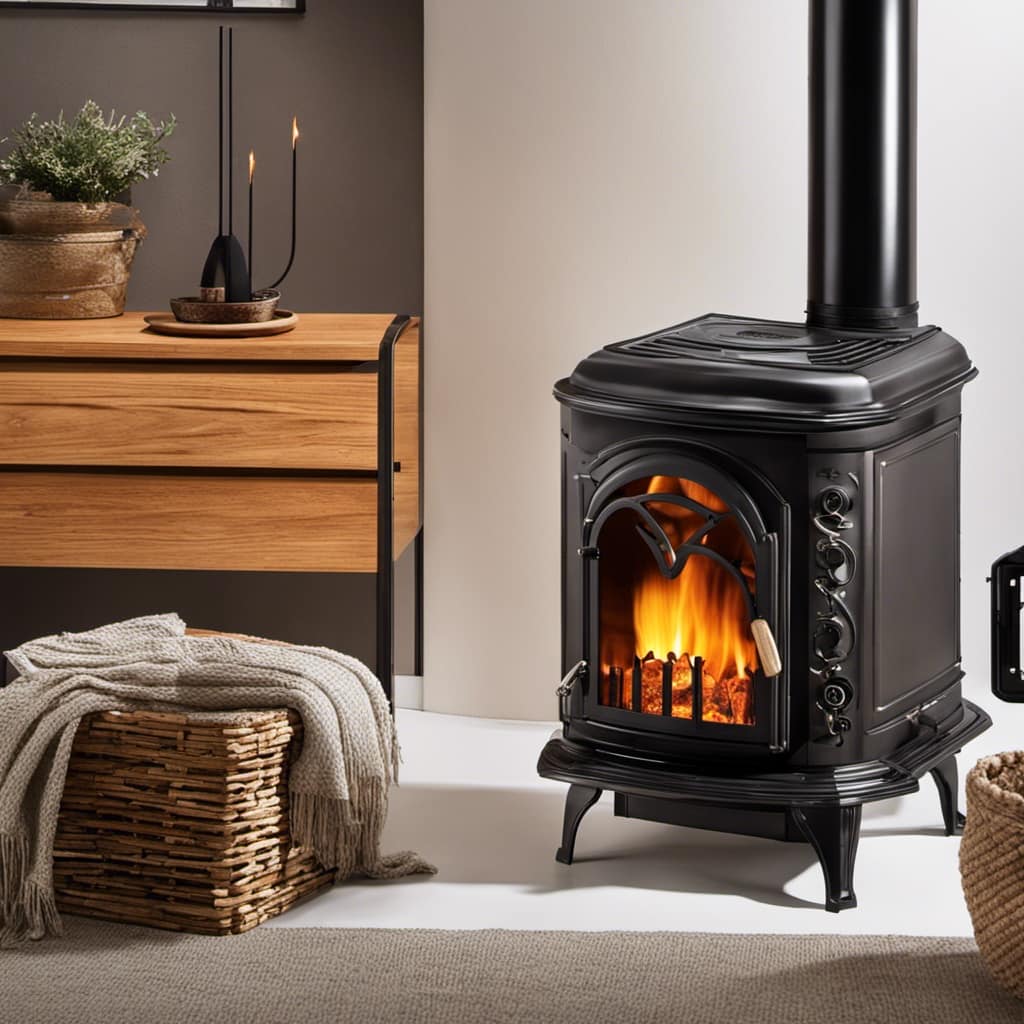
Lastly, spin dampers use a rotating plate to regulate the flow of air and smoke.
Understanding the functionality of these dampers is crucial for proper usage and maintenance.
Types of Dampers
The most common types of dampers for wood stoves are the manual and automatic dampers. Manual dampers are typically located on the flue pipe or chimney and are controlled by a lever or knob. They allow you to manually adjust the airflow and control the intensity of the fire.
On the other hand, automatic dampers are designed to regulate the airflow automatically. They’re usually installed inside the stove and operate using a thermostat or a bimetallic spring. These dampers open and close based on the temperature inside the stove, ensuring optimal combustion efficiency.
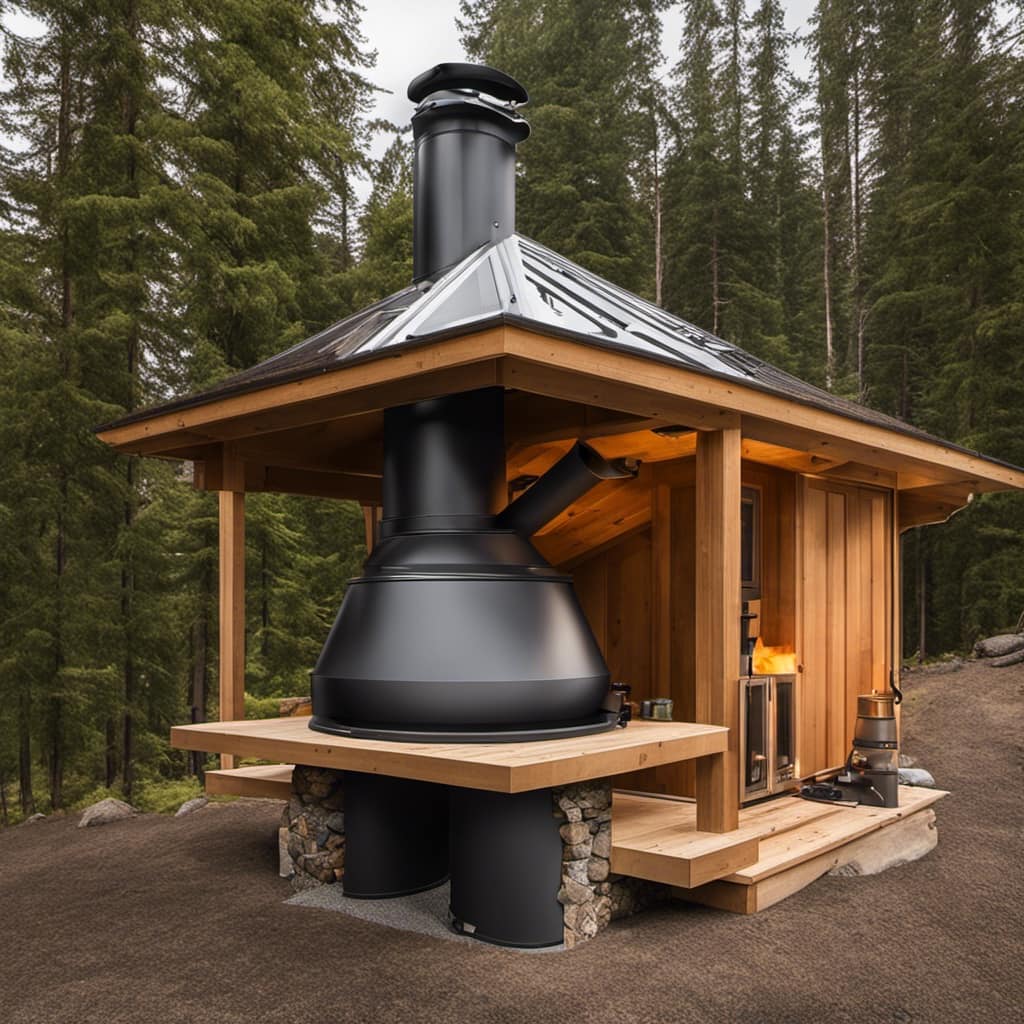
Both fireplace dampers and chimney dampers can be either manual or automatic, providing a means to control the flow of air and smoke in and out of the stove. Understanding the different types of dampers is crucial for effectively managing the wood stove’s performance and maintaining a safe and efficient burn.
Now, let’s delve into the functionality of these dampers.
Damper Functionality
When managing the airflow, it’s important to understand how the different types of dampers function. Damper operation is crucial for maintaining the desired temperature and controlling the fire in a wood stove. Here are some key points to consider:
Types of Dampers:

Primary Damper: This damper, located at the top of the stovepipe, controls the overall airflow and heat output of the wood stove.
Secondary Damper: Found inside the firebox, this damper helps regulate the combustion process by allowing more or less air into the fire.
Troubleshooting Damper Issues:
If the fire isn’t getting enough air, the damper may be closed or obstructed. Check and adjust accordingly.
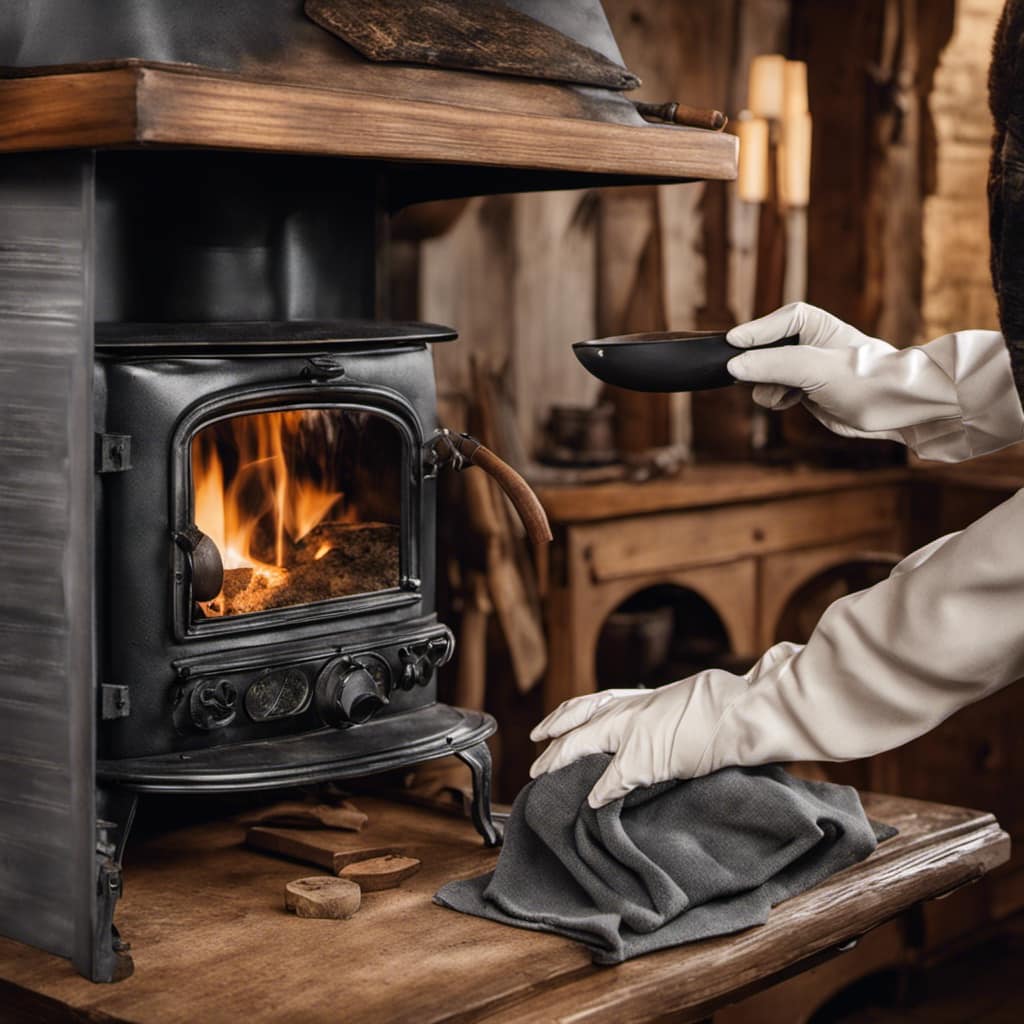
If the fire is burning too hot or too fast, the damper may be open too much. Try closing it slightly to reduce the airflow.
Understanding damper operation and troubleshooting common issues will ensure efficient and safe use of your wood stove.
Proper Damper Usage
I find it helpful to control the airflow and regulate the temperature by adjusting the damper. Proper damper usage is essential for efficient wood stove operation.
To ensure optimal performance, regular damper maintenance is necessary. Over time, soot and creosote can accumulate on the damper, hindering its functionality. It’s important to inspect and clean the damper periodically. Use a wire brush to remove any buildup and ensure smooth movement.
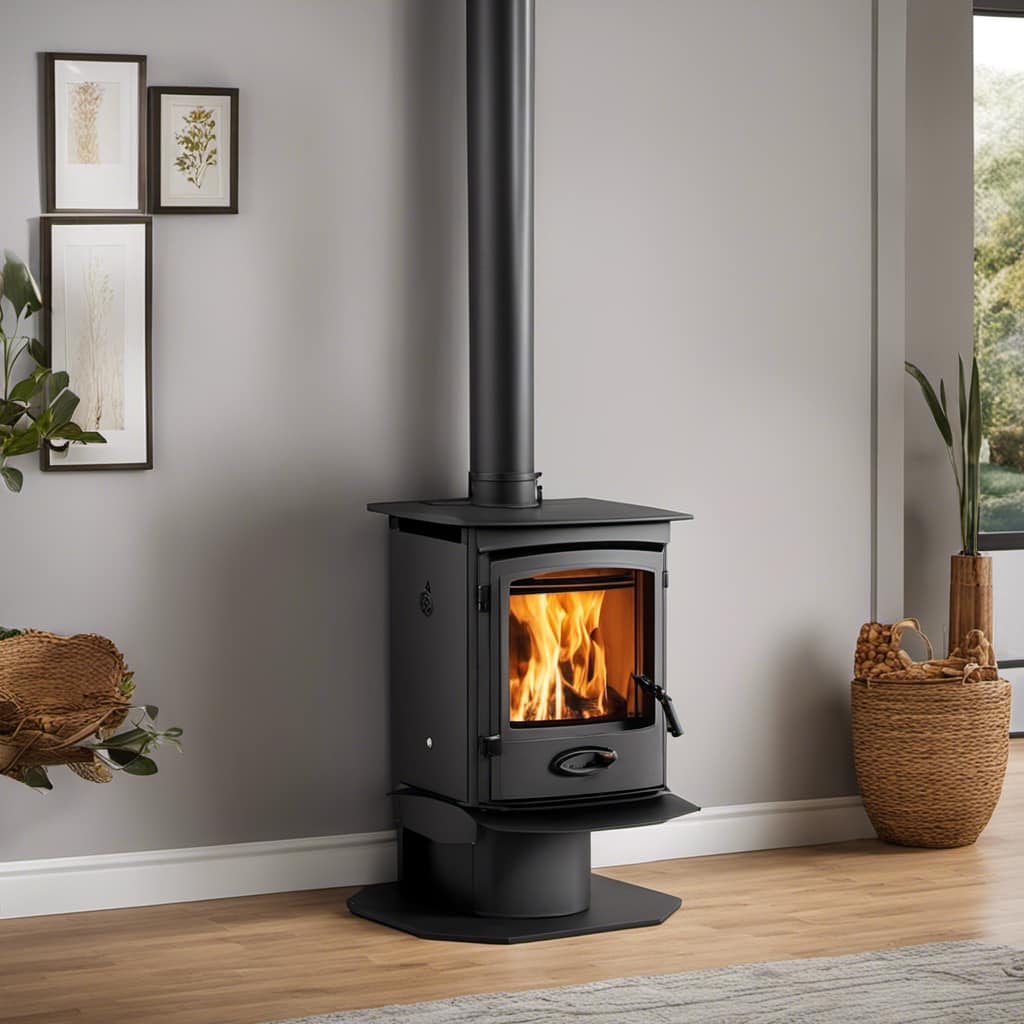
Additionally, troubleshooting damper issues is crucial. If the damper becomes difficult to open or close, it may be due to rust or debris. In such cases, lubricating the damper with a high-temperature lubricant can help.
How to Locate and Access Your Wood Stove Damper
To find and reach my wood stove damper, I just need to remove the stovepipe elbow. This allows me easy access to the damper handle, which is typically located on the top or side of the stove.
If you’re having trouble locating the damper handle, here are a few troubleshooting tips:
- Check the owner’s manual: The manual will provide specific instructions on the location of the damper handle for your particular wood stove model.
- Look for a lever or knob: The damper handle is usually a lever or a knob that can be easily turned to adjust the airflow. It may be hidden behind a panel or cover, so be sure to thoroughly inspect the stove.
Once you’ve located the damper handle, it’s important to understand how to properly use it. The damper controls the amount of air entering the stove, which in turn affects the burn rate and heat output. By adjusting the damper, you can regulate the intensity of the fire and ensure efficient burning.
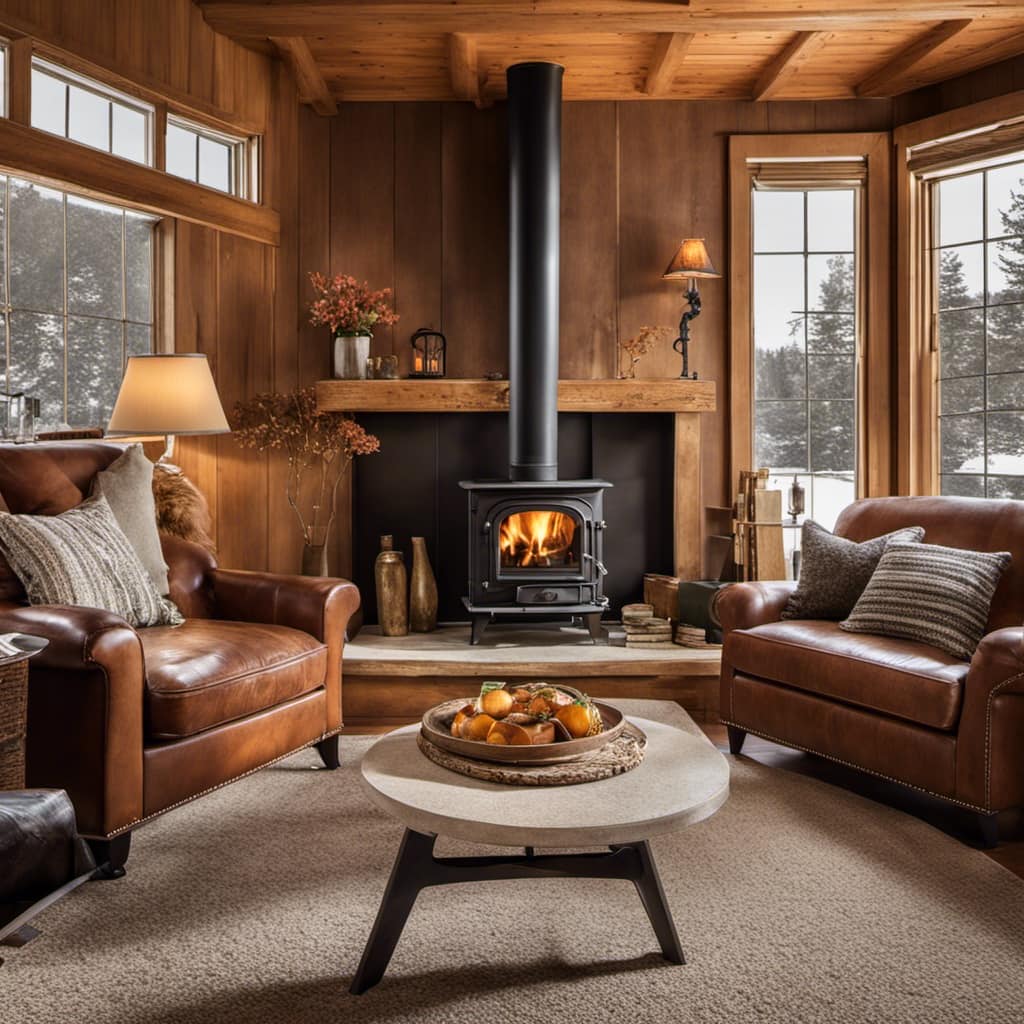
Adjusting the Damper for Optimal Airflow and Heat Control
To achieve optimal airflow and heat control with your wood stove, it’s important to adjust the damper correctly.
By positioning the damper appropriately, you can regulate the amount of air entering the stove, which directly affects the heat output.
This allows you to maintain a comfortable temperature while maximizing fuel efficiency.
Proper Damper Positioning
When using a wood stove, it’s important to position the damper correctly to ensure efficient burning. Proper damper maintenance and troubleshooting damper issues are essential for optimal performance. Here are some key tips to help you with proper damper positioning:
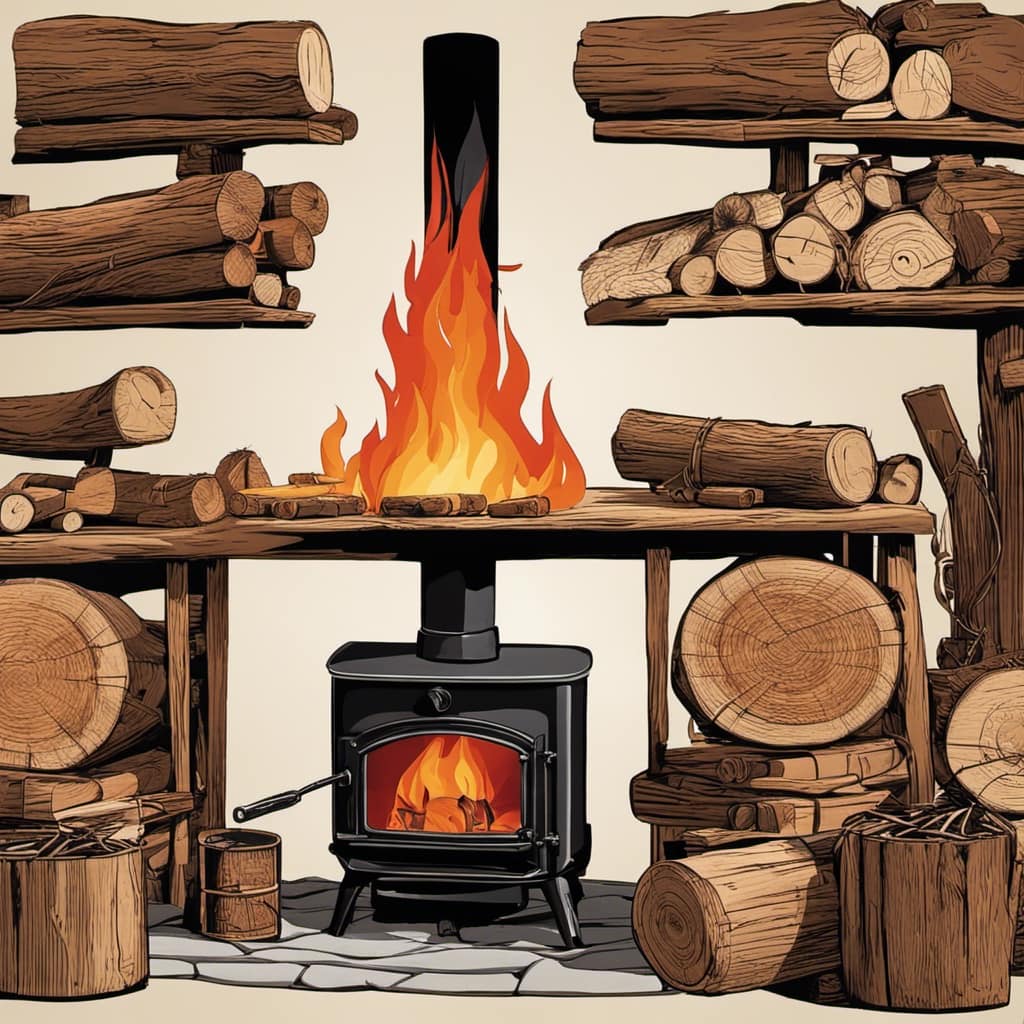
- Open the damper fully before starting a fire.
- Adjust the damper based on the desired heat output and burn rate.
- A fully open damper allows for maximum airflow and heat production.
- Partially closing the damper reduces the airflow and slows down the burn rate.
By following these guidelines, you can ensure that your wood stove operates at its best efficiency, providing you with a cozy and warm environment.
Now, let’s move on to the next section and learn about controlling heat output for even more comfort.
Controlling Heat Output
Controlling the heat output is crucial for maintaining a comfortable temperature in my home while using the wood stove. It allows me to manage the burn rate and ensure efficient use of wood while preventing overheating. By adjusting the damper, I can regulate the amount of oxygen that enters the stove, which directly affects the burn rate and heat output.
To effectively control the temperature, I refer to a table that provides guidelines based on the damper position and resulting heat output. This table helps me make informed decisions and maintain a consistent temperature in my home.
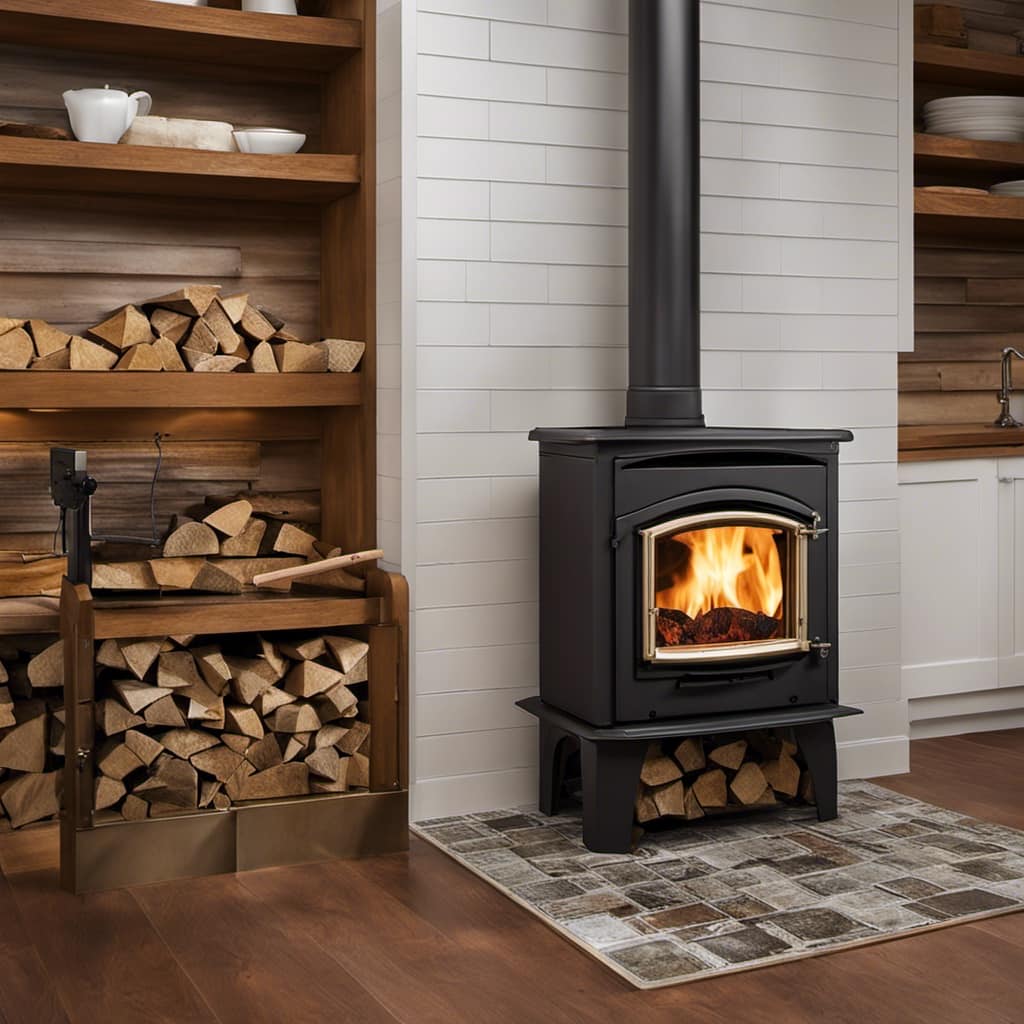
| Damper Position | Heat Output |
|---|---|
| Fully Open | High |
| Half Open | Medium |
| Nearly Closed | Low |
| Fully Closed | No heat |
| Varying Position | Variable |
Using this table as a reference, I can easily adjust the damper to achieve the desired heat output and control the temperature in my home. It is important to monitor and make small adjustments as needed to maintain a comfortable and efficient burn rate.
Enhancing Fuel Efficiency
When it comes to enhancing fuel efficiency in a wood stove, there are a few key strategies that can make a significant difference.
Firstly, increasing the heating capacity of the stove can help maximize the output of heat produced. This can be achieved by ensuring proper insulation, using a stove with a high BTU rating, and optimizing the placement of the stove in the room.
Secondly, reducing the environmental impact of wood stove usage is crucial. By burning seasoned firewood, which has a lower moisture content, you can improve combustion and reduce the amount of smoke and pollutants released into the air. Additionally, using a catalytic converter or secondary combustion system can further minimize emissions.

Tips for Using the Damper to Increase Efficiency and Reduce Smoke
I find that adjusting the wood stove damper helps increase efficiency and reduce smoke. By properly using the damper, you can’t only save on fuel consumption but also reduce your environmental impact. When the damper is closed, it limits the amount of oxygen that enters the stove, resulting in slower and more efficient combustion. This not only ensures that the wood burns more completely but also prevents the release of harmful pollutants into the air. By controlling the airflow with the damper, you can achieve a cleaner and more efficient burn, reducing smoke production and minimizing the creosote buildup in the chimney.
To maximize efficiency, it’s important to adjust the damper according to the burn rate and desired heat output. When starting a fire, open the damper fully to allow for maximum airflow. Once the fire is established and the stove is producing enough heat, you can begin adjusting the damper to control the burn rate. Remember to never completely close the damper while the fire is still burning as it can cause smoke to back up into the room.
In the next section, we’ll discuss common mistakes to avoid when using a wood stove damper to ensure optimal performance and safety.
Common Mistakes to Avoid When Using a Wood Stove Damper
A common mistake people make with the damper is forgetting to open it fully when starting a fire, which can lead to poor airflow and difficulty in getting the fire going. To avoid this mistake and ensure optimal performance of your wood stove damper, here are some troubleshooting tips:
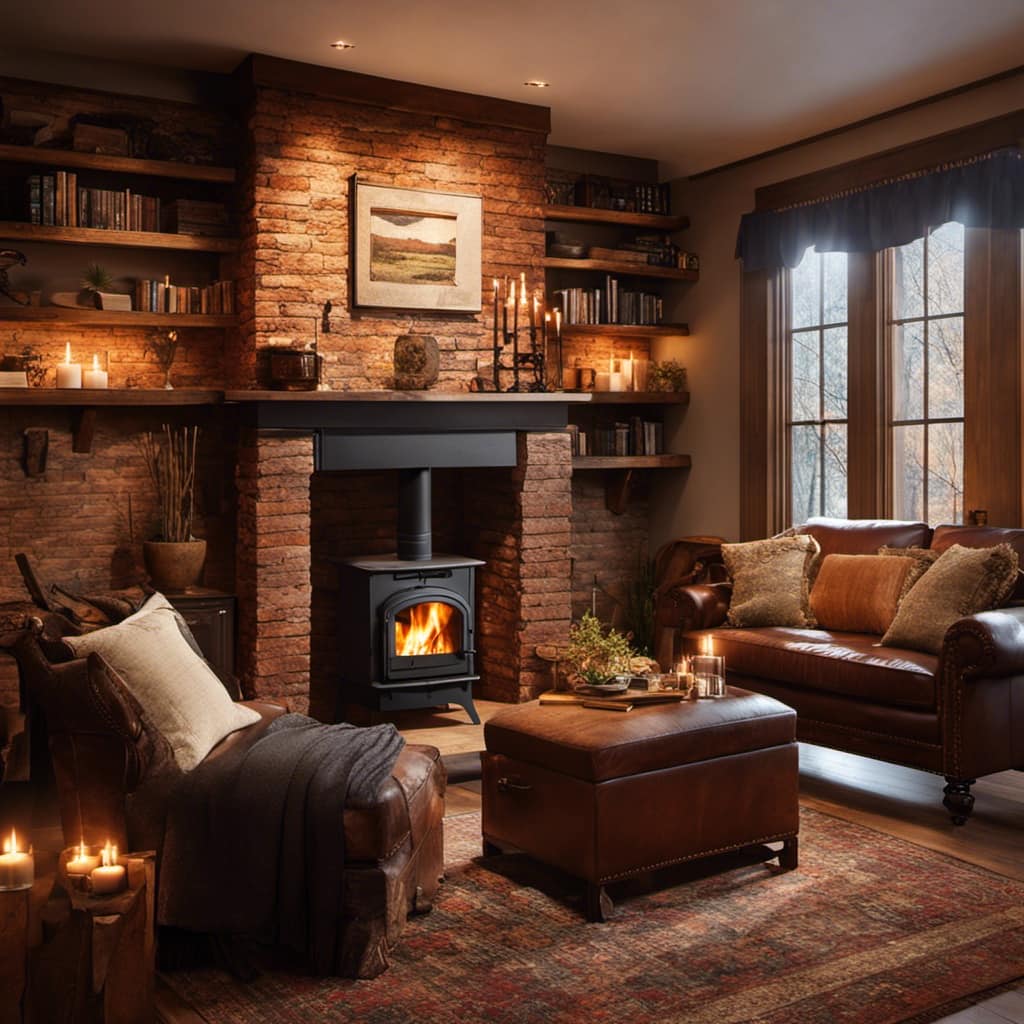
- Make sure to fully open the damper before starting a fire to allow proper airflow and prevent smoke from entering the room.
- Avoid closing the damper too soon. It’s essential to keep it open until the fire is completely out and the stove has cooled down to prevent the buildup of harmful gases.
- Remember to check the damper regularly during use to ensure it remains open and allows for adequate ventilation.
- If you notice a decrease in the fire’s intensity or see smoke entering the room, check if the damper is partially closed and adjust it accordingly.
By following these simple tips, you can avoid common mistakes and ensure the efficient operation of your wood stove damper.
Now let’s delve into maintaining and cleaning your wood stove damper for longevity and performance.
Maintaining and Cleaning Your Wood Stove Damper for Longevity and Performance
To ensure optimal longevity and performance of my wood stove damper, I regularly maintain and clean it. Cleaning techniques are essential for keeping the damper in good working condition and preventing any issues that may arise. Here are some effective cleaning techniques that I use to maintain my wood stove damper:
| Cleaning Technique | Description |
|---|---|
| Brushing | I use a stiff-bristle brush to remove any soot or creosote buildup from the damper. This helps to prevent blockages and ensures proper airflow. |
| Vacuuming | Using a vacuum cleaner with a brush attachment, I carefully remove any loose debris or ash that may have accumulated in the damper. This helps to improve efficiency and prevent clogging. |
| Scrubbing | For stubborn stains or residue, I mix a solution of warm water and mild detergent. Using a soft brush or cloth, I gently scrub the damper to remove any buildup. |
| Inspecting | Regularly inspecting the damper for any signs of damage or wear is important. This allows me to identify and address any issues before they become major problems. |
| Lubricating | Applying a small amount of high-temperature lubricant to the moving parts of the damper helps to ensure smooth operation and prevents rusting. |
What Is the Purpose of Using a Damper on a Wood Stove?
The wood stove damper function is crucial for regulating airflow and controlling the burning rate of the fire. By adjusting the damper, you can increase or decrease the intensity of the fire, making the wood stove more efficient and ensuring a steady, consistent heat output.
Frequently Asked Questions
What Are Some Common Signs That Indicate the Wood Stove Damper Needs to Be Replaced?
Signs of a faulty wood stove damper can include difficulty in controlling the airflow, excessive smoke production, and a decrease in stove efficiency. These signs may indicate that the damper isn’t functioning properly and needs to be replaced.
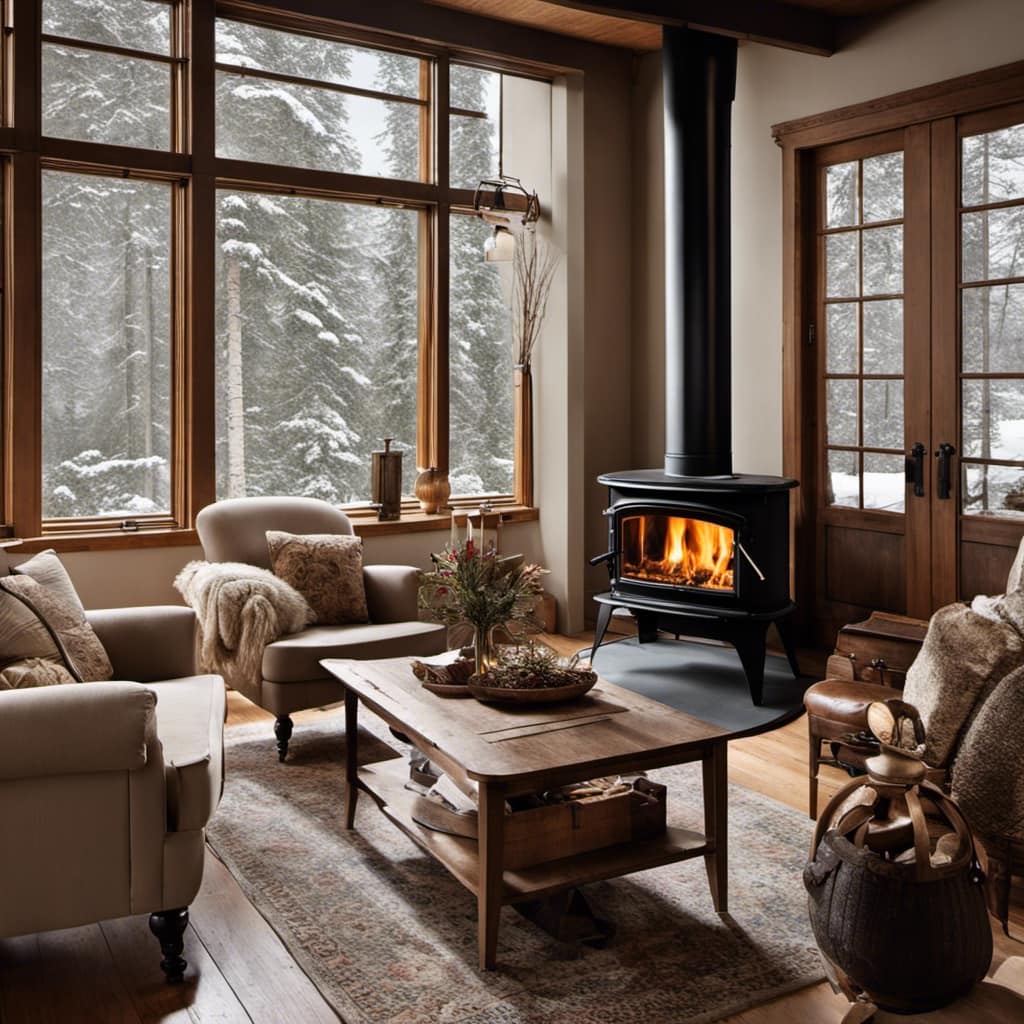
To properly maintain a wood stove damper, regular inspections and cleaning are essential. This ensures that the damper is working correctly and prolongs its lifespan.
If any of the signs mentioned are present, it’s recommended to consult a professional for further guidance.
Can a Wood Stove Damper Be Used With Any Type of Wood Stove?
Using a wood stove damper has its benefits. It helps control the airflow and temperature in your wood stove, making it more efficient and reducing heat loss.
There are different types of wood stove dampers available, such as the traditional manual damper or the more modern automatic damper. The type you use depends on the specific model of your wood stove.
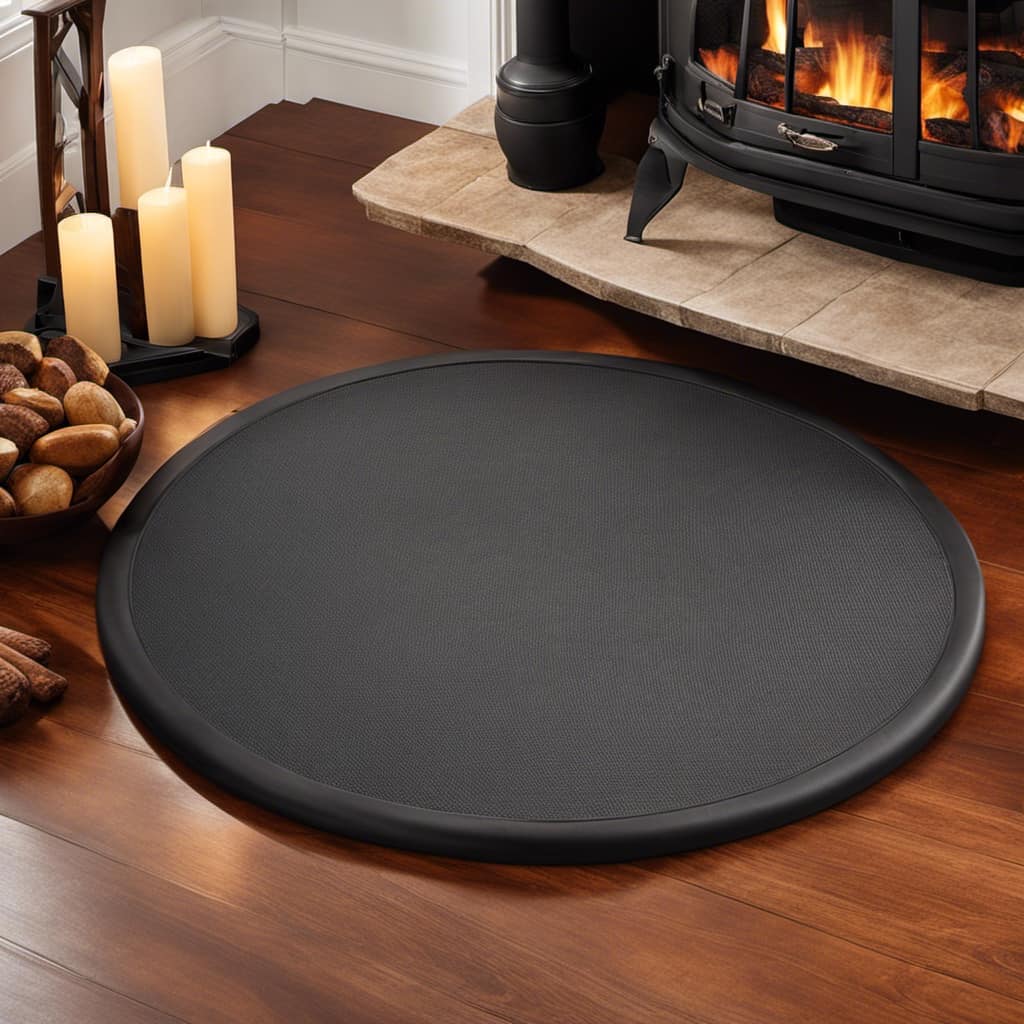
Overall, using a wood stove damper can greatly improve your wood-burning experience.
How Do I Know if My Wood Stove Damper Is Open or Closed?
To determine if my wood stove damper is open or closed, I typically look for visual cues. When the damper is open, I can see a larger opening in the stovepipe or chimney. Conversely, if the damper is closed, the opening will be smaller or completely blocked.
Adjusting the damper is an essential step in properly operating a wood stove. If you’re unsure how to do this, there are resources available that explain how to properly adjust a wood stove damper and troubleshoot common issues.
Are There Any Safety Precautions I Should Take When Using a Wood Stove Damper?
When it comes to using a wood stove damper, safety precautions are essential. Proper usage is crucial to prevent accidents and ensure efficient operation.
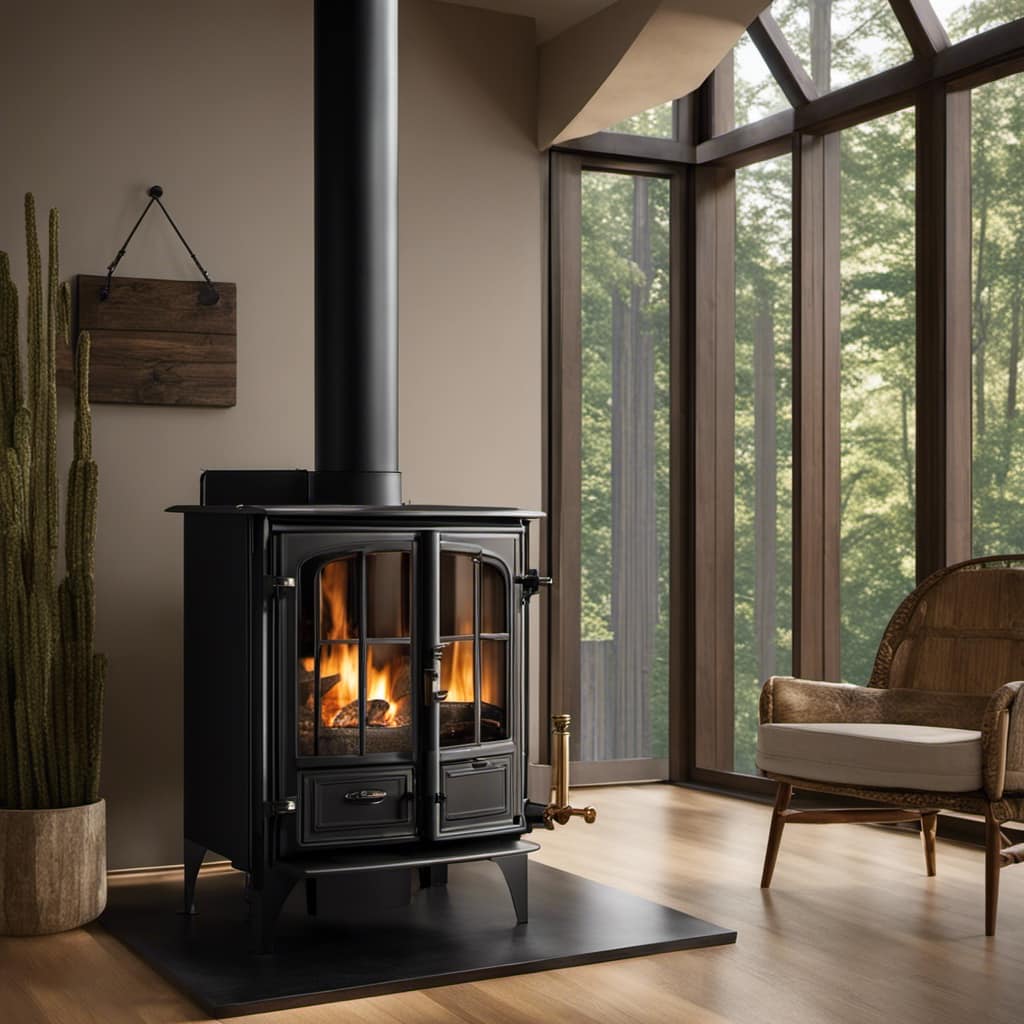
Always make sure the damper is fully open before starting a fire and adjust it as needed to control the airflow.
Regularly inspect and clean the damper to remove any buildup or debris that could affect its function.
Remember to follow the manufacturer’s instructions and guidelines for safe and effective use of the wood stove damper.
Can a Wood Stove Damper Be Used to Control the Intensity of the Fire?
Using a wood stove damper can indeed help control the intensity of the fire. It’s a great tool for regulating the airflow and heat output. By adjusting the damper, you can increase or decrease the amount of oxygen reaching the fire, thus controlling the burn rate and temperature.
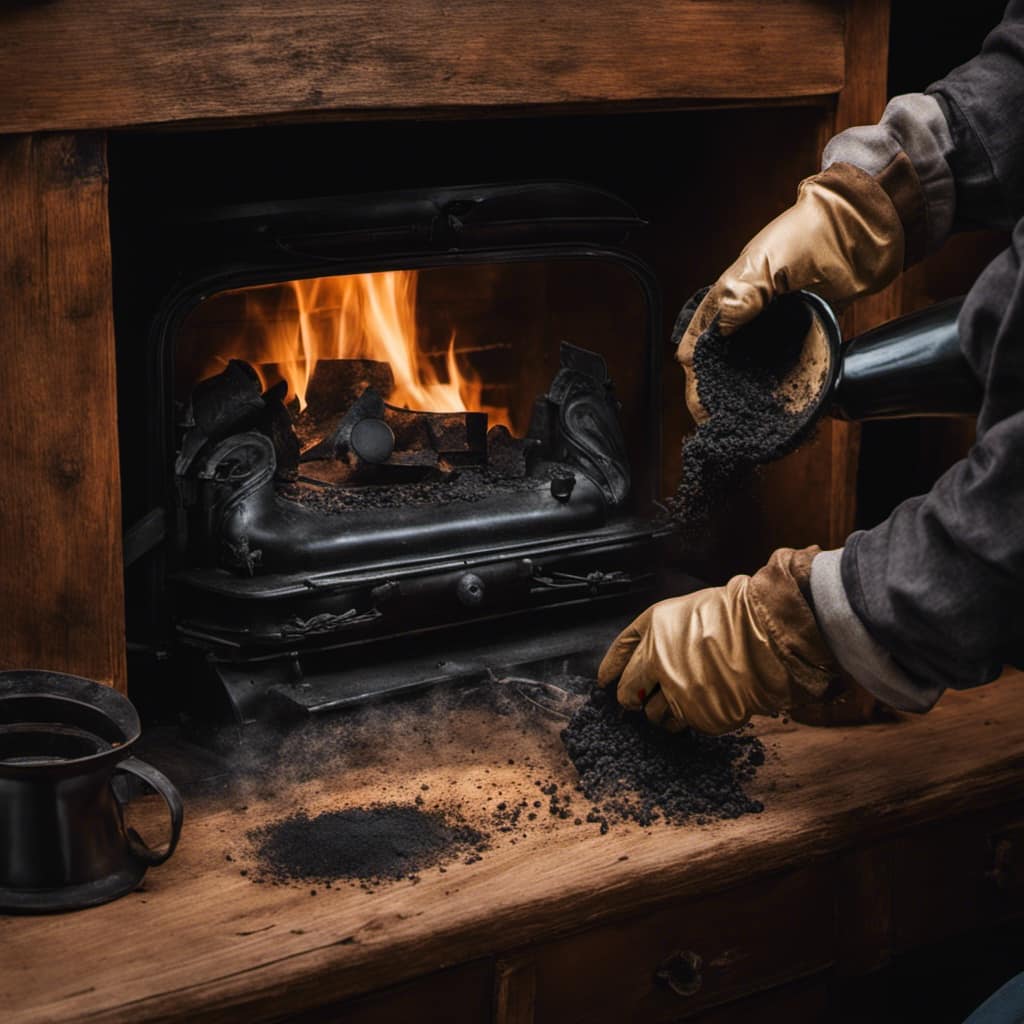
This allows for more efficient and controlled heating. Regular wood stove damper maintenance is essential for optimal performance, ensuring that it functions properly and helps you enjoy the benefits of using a wood stove damper.
Conclusion
In conclusion, understanding how to properly use a wood stove damper is essential for optimal heat control and efficiency. By adjusting the damper and following the tips provided, you can increase the airflow, reduce smoke, and ultimately improve the performance of your wood stove.
Did you know that using a wood stove damper correctly can increase the efficiency of your wood stove by up to 30%? This simple device can make a significant difference in your heating experience.
Growing up surrounded by the vast beauty of nature, Sierra was always drawn to the call of the wild. While others sought the comfort of the familiar, she ventured out, embracing the unpredictable and finding stories in the heartbeat of nature.
At the epicenter of every remarkable venture lies a dynamic team—a fusion of diverse talents, visions, and passions. The essence of Best Small Wood Stoves is crafted and refined by such a trio: Sierra, Logan, and Terra. Their collective expertise has transformed the platform into a leading authority on small wood stoves, radiating warmth and knowledge in equal measure.









